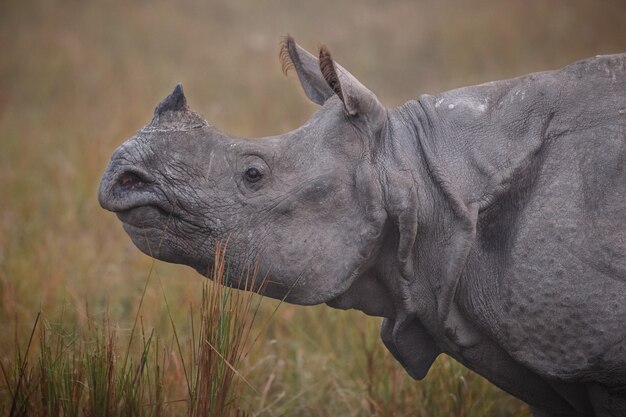Fascinating Facts about Black Rhinos

Black rhinos are actually not black, but gray in color.
Unlike white rhinos, black rhinos have a pointed upper lip which helps them eat leaves and fruits.
Black rhinos are the smaller of the two rhino species.
They have a prehensile lip that allows them to grasp and tear leaves and branches.
The name black rhino comes from the Dutch word zwart, which means black.
Black rhinos have poor eyesight but a keen sense of smell and hearing.
Despite their intimidating appearance, black rhinos are known to be shy and non-aggressive.
Black rhinos have two horns, with the front one being longer.
The horns of black rhinos are made of keratin, the same substance as our hair and nails.
Unfortunately, black rhinos are critically endangered due to poaching and habitat loss.
They are herbivores, feeding on a variety of plants, shrubs, and trees.
Black rhinos communicate through a series of grunts, squeaks, and bellows.
Unlike other animals, black rhinos have a unique way of marking their territory by spraying urine behind them.
Black rhinos have a gestation period of about 15-16 months.
Calves stay with their mothers for around 2-3 years before becoming independent.
Black rhinos can reach speeds of up to 35 mph when charging.
Their thick skin acts as a natural defense against predators and helps protect them from scratches and sunburns.
Black rhinos play a vital role in their ecosystems by dispersing seeds in their dung.
Fascinating Facts about Black Rhinos part 2
They have a lifespan of around 35-50 years in the wild.
Black rhinos have a complex social structure, with males being solitary and females forming small groups.
Both male and female black rhinos have a hierarchy within their social groups.
The horns of black rhinos are highly valued in traditional medicine, leading to illegal hunting.
Conservation efforts have focused on protecting black rhino populations in national parks and reserves.
Black rhinos are known to wallow in mud to cool down and protect their skin from parasites.
Black rhinos have a unique browsing technique, where they use their lips to pluck leaves and twigs.
They have a relatively small home range, typically spanning up to 5 square miles.
Black rhinos are known for their strong sense of smell, which helps them locate food and detect threats.
The horns of black rhinos continue to grow throughout their lives.
Black rhinos have a well-developed sense of hearing, which enables them to perceive distant sounds.
Their horns are often used as symbols of power and status in some cultures.
Black rhinos have a thick layer of skin that protects them from thorny bushes and sharp branches.
Despite their size, black rhinos are agile and can navigate through dense vegetation.
Black rhinos have a keen sense of territoriality and aggressively defend their space from intruders.
Rhino conservation organizations are working to increase anti-poaching measures and raise awareness.
Black rhinos have a specialized dentition adapted for chewing tough vegetation.
They have a unique shape to their lip which allows them to browse on different types of plants.
The population of black rhinos has declined by more than 90% over the past 50 years.
Conservation programs focus on habitat restoration and creating safe corridors for black rhinos to move between protected areas.
Black rhinos have a strong bond with their mothers and often stay close to them even after becoming independent.
The horns of black rhinos are thought to have healing properties in some traditional Asian medicines.
Black rhinos have a loose skin that allows them to move more freely.
The horns of black rhinos are used for defense against predators and during fights between males.
Black rhinos are solitary creatures and prefer to spend most of their time alone.
Their horns are made of tightly packed fibers that continue growing throughout their lives.
Black rhinos are a keystone species, meaning they have a significant impact on their ecosystem’s structure and function.

